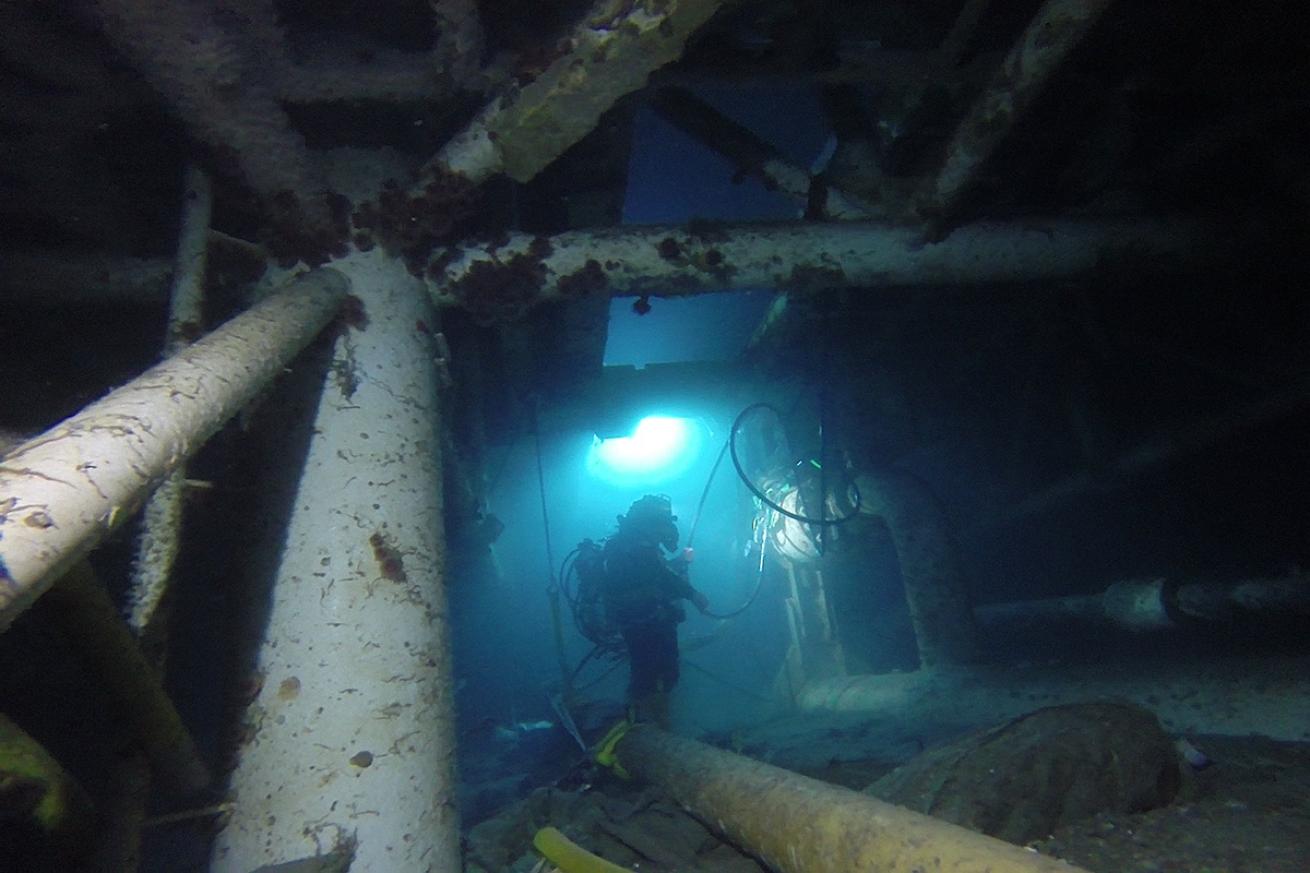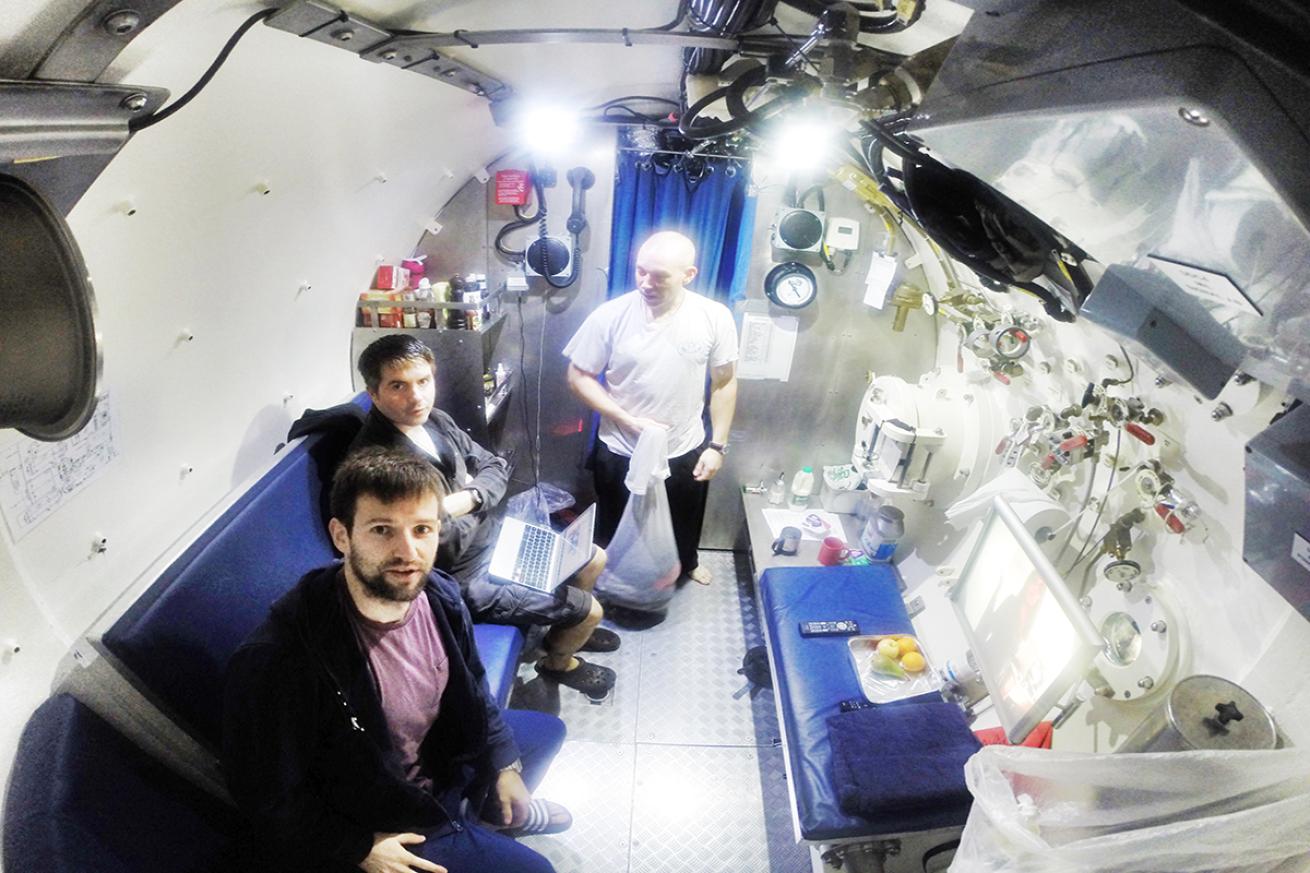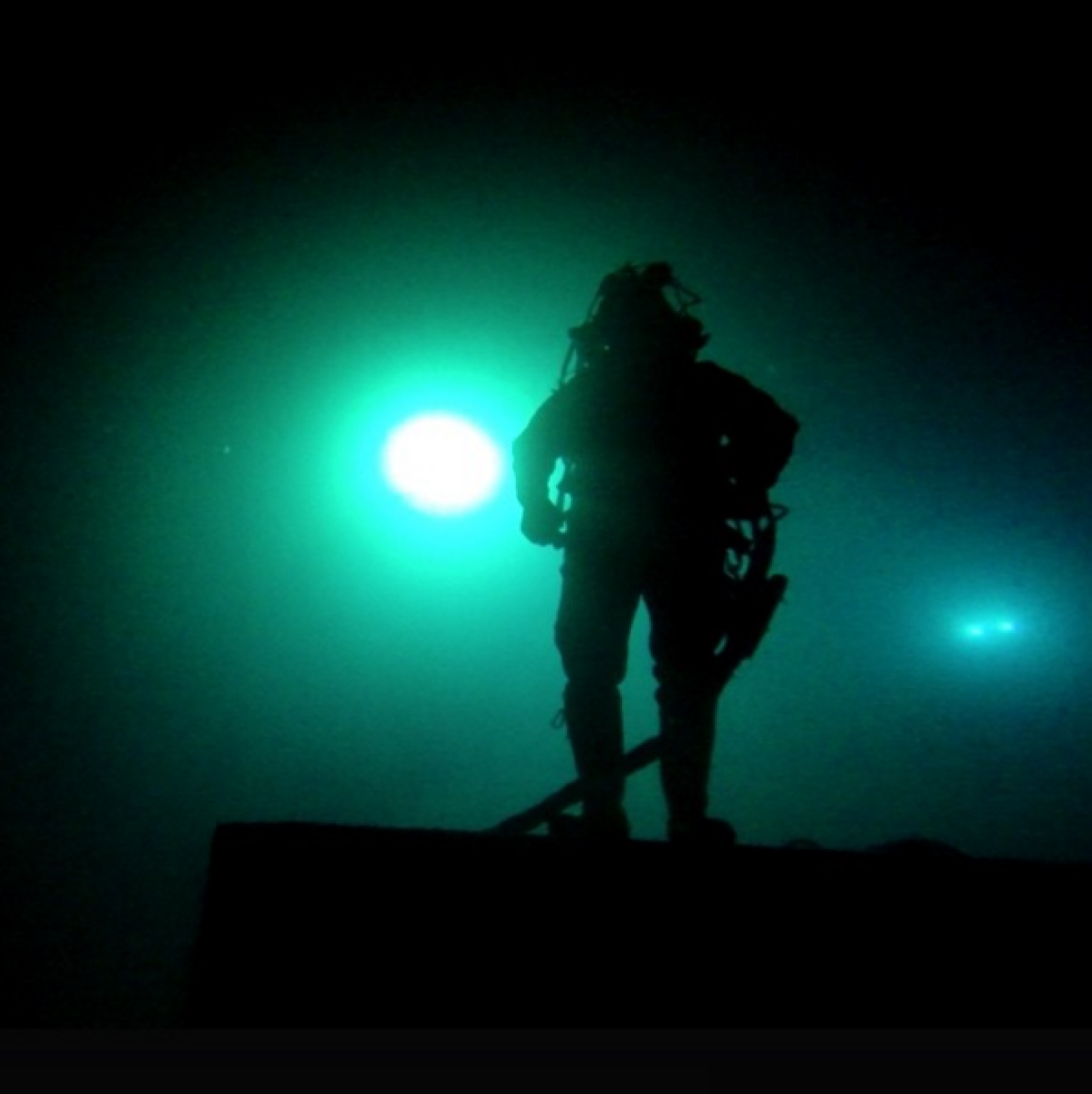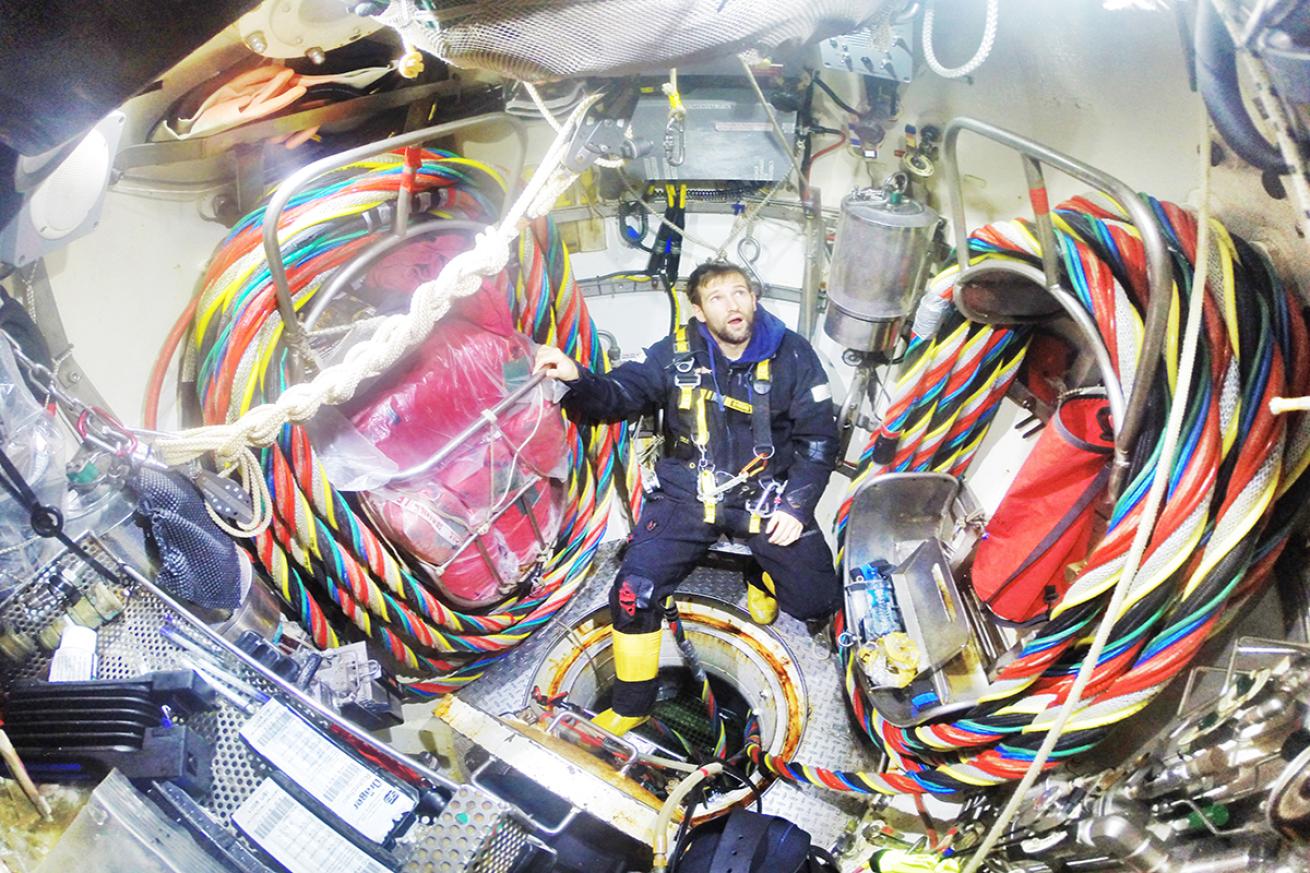What It’s Like to be a Saturation Diver

Courtesy Gavan HenniganWorking at the bottom of the sea.
I work on a Deep Arctic Diving Support Vessel that’s the biggest of its kind. With 120 crew onboard, it’s a heavy construction diving vessel that supports operations around the world. The onboard Saturation Diving Complex is my home base on the ship, that’s where I start my day—or, more importantly, where I start my 28 days at work and under compression. We live here for extended periods in a controlled environment—our cylindrical living quarters—where we can be compressed in a matter of hours on a Heliox gas mixture.
We’re always 12 divers in the system at a time. We work in teams of three to cover round-the-clock operations. When it’s time to go to work for our shift, we leave the living chambers and travel through a “moon pool" (a hole in the bottom of the ship) to the sea floor inside a diving bell. Two of us go out to work for six hours and the third diver stays in the bell. The work we do is hard, we’re joining large pipelines together. Sometimes the visibility is bad, sometimes it’s amazing.

Courtesy Gavan HenniganSaturation diving is not for the claustrophobic—Hennigan and his colleagues live in a small pod at-depth for upwards of a month at a time.
Our gas is surface-supplied from a massive gas room onboard the boat via a main umbilical to the diving bell panel, then routed to our divers’ umbilicals that go straight to our diving hats. The gas is then reclaimed back out of the hat via another hose in the umbilical into the bell and back up to the boat, where the Co2 is scrubbed and fresh O2 is added. It's a complex system but it works well, as helium is an expensive gas.
At the end of the diving shift, we come back to our living space to eat and sleep. How long we decompress before returning to the surface depends on how deep we’ve dived. My longest decompression was for nine days after diving at 210 meters (690 feet) off Libya.

Courtesy Gavan Hennigan"My longest decompression was for nine days after diving at 210 meters (690 feet) off Libya." - Gavan Hennigan
I wasn't a recreational diver before I became a commercial diver. I left school early and worked in construction until I was 22, when I took my diving course in Western Australia. I happened to be there traveling and found out about the training school. As a keen surfer and someone who grew up a stone’s throw from the ocean on the west coast of Ireland, I felt this could be the perfect job for me. And it is.
I’ve dived all over the world—West Africa, the Middle East, Southeast Asia. Lately, it’s the North Sea. Among many exciting memories, there’s getting bumped by large seals in pitch black waters over 600 feet down in the Caspian Sea.
It's a very unpredictable crazy life, getting calls in the middle of the night to go offshore and not knowing for how long. I've made it work for me, though, and can say I'd find it hard to have a regular life at this stage.
I like being underwater, going diving usually gets me excited. It’s always different down there no matter what the day brings.

Courtesy Gavan HenniganLong cords known as umbilicals connect divers to the support vessel, supplying a steady stream of breathable air straight into their helmets.










